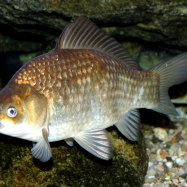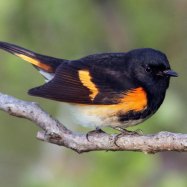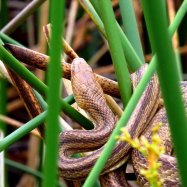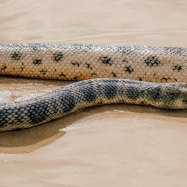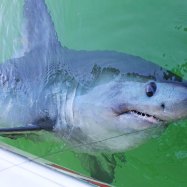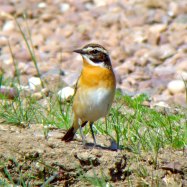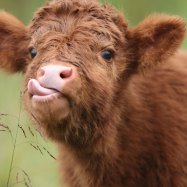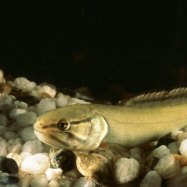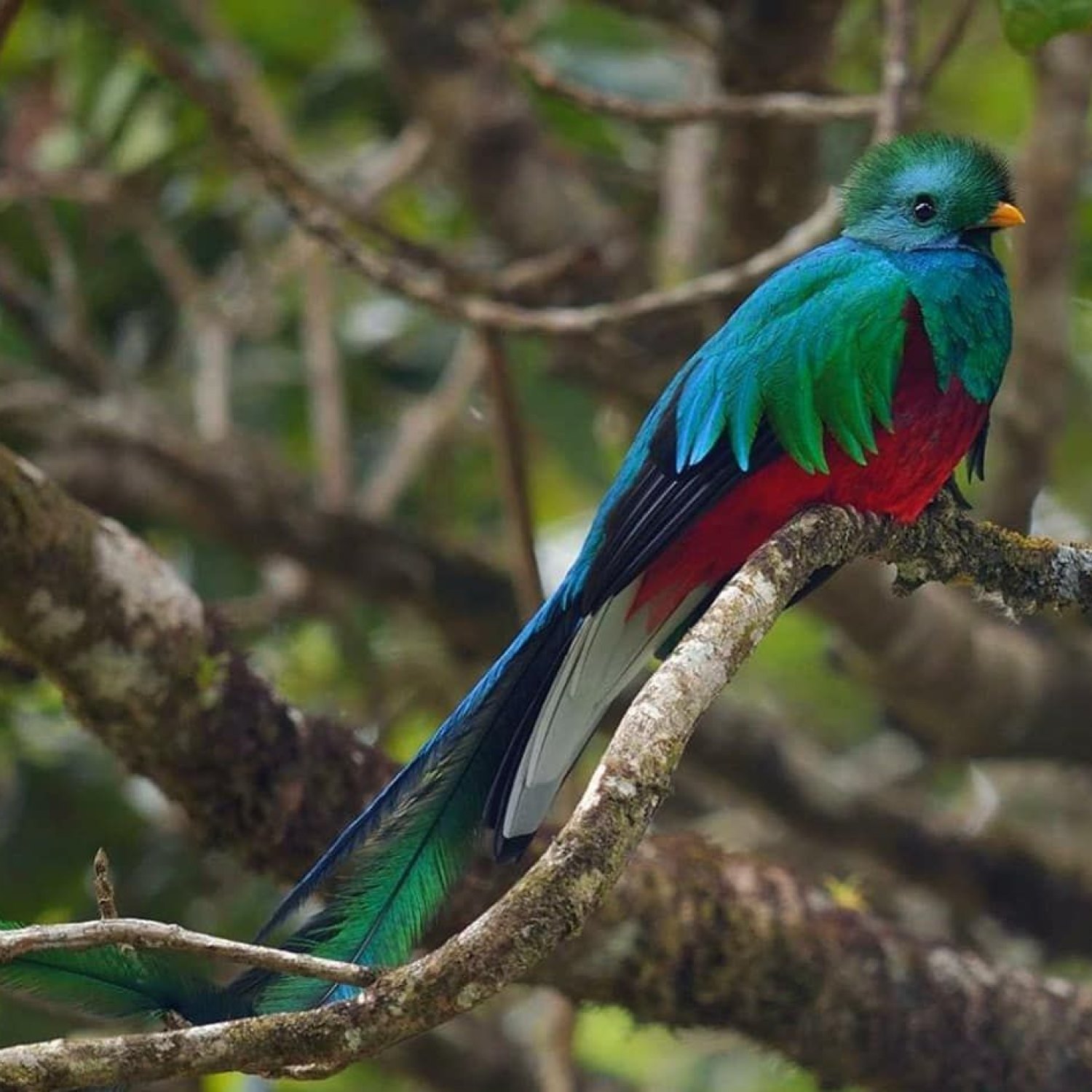
Quetzal
36-40 cm (14-16 inches)
The Quetzal bird, found in tropical rainforests, is known for its beautiful green and red feathers. With a body shape that is stocky and a short tail, they measure 36-40 cm (14-16 inches) in length. Belonging to the Trogonidae family, this stunning bird is a must-see for any nature enthusiast. #Quetzal #rainforest #birdwatching #naturelovers
Animal Details Summary:
Common Name: Quetzal
Kingdom: Animalia
Habitat: Cloud forests
The Quetzal: A Majestic Bird of Central America
In the misty cloud forests of Central America, there lives a bird that has captured the hearts of many with its vibrant colors and elusive nature. This magnificent creature, with its distinctive bright green, red, and blue feathers, is known as the Quetzal - also called by its scientific name, Pharomachrus mocinno. Considered a symbol of freedom and beauty, the Quetzal holds a special place in the hearts and cultures of the people of Central America. In this article, we will dive deeper into the world of the Quetzal and discover the fascinating features that make it a unique and enchanting animal Quetzal.A Royal Lineage
The Quetzal is a member of the Trogonidae family, which is a group of birds found in the tropical and subtropical regions of the world. They are also a part of the order Trogoniformes, a diverse group of birds that are widespread in the Americas, Africa, and Asia. What sets the Quetzal apart from the rest of the family is its regal ancestry. It is believed that the ancient rulers of the Mayan civilization considered the Quetzal bird to be a sacred animal and a symbol of wealth and prestige. The feathers of the Quetzal were highly coveted and were only worn by the royalty and priests during important ceremonies. This reverence for the Quetzal can still be seen in the flags and emblems of several Central American countries, including Guatemala, where it is the national bird.Intriguing Habitat and Distribution
The Quetzal is primarily found in the cloud forests of Central America, which are high-altitude, mist-covered forests that have a high level of humidity. These forests are considered to be one of the most diverse and rich ecosystems on Earth, making it an ideal habitat for the Quetzal. This species is highly adaptable and has been spotted in various types of forests, such as tropical rainforests, humid mountain forests, and even in coffee plantations Quokka.They are endemic to Central American countries, and their geographical range includes Mexico, Guatemala, Honduras, Costa Rica, Nicaragua, and Panama. While they are still found in these countries, their population has been significantly affected due to deforestation and habitat destruction. As a result, the Quetzal has been labeled as a near-threatened species by the International Union for Conservation of Nature (IUCN). To protect and conserve this beautiful bird, several conservation efforts have been put in place, including the creation of protected areas and education programs for the local communities.
A Unique Feeding Method
The Quetzal has a distinct feeding behavior that sets it apart from other birds. While most birds feed on insects, the Quetzal is a frugivorous species, meaning it feeds predominantly on fruits. It has a strong beak that helps in opening the fruit, making it easier for them to consume. Their diet consists of a variety of fruits, including wild avocados, figs, and aguacatillo - a small, green fruit found in the cloud forests.One of the most fascinating things about the Quetzal's feeding habits is its role in seed dispersal. When the Quetzal feeds on fruits, it swallows the seeds, which pass through its digestive system and are deposited in different locations, thus helping in the dispersal of seeds. This process is essential for the growth and survival of many plant species in the cloud forests, making the Quetzal an integral part of the ecosystem.
A Feast for the Eyes
The Quetzal's stunning appearance is what captures the hearts of bird enthusiasts and nature lovers alike. The males are known for their long, vibrant tail feathers that can reach up to two feet in length. These feathers are highly sought after and are often used in traditional costumes and ceremonial headdresses by the indigenous communities of Central America. Because of this, the Quetzal has been a victim of illegal wildlife trade. However, it is illegal to possess or trade Quetzal feathers, and strict measures are in place to protect these birds.Apart from their long, colorful tail feathers, the Quetzal's body is a sight to behold. Its body is mostly bright green, with a red chest and a blue crown on its head. This color combination gives it an ethereal look, making it almost seem otherworldly. One might wonder how these birds maintain their vibrant colors in the dense forest environment. The secret lies in the specialized melanin pigment present in their feathers that gives them a metallic sheen. This feature makes the Quetzal one of the most visually striking birds in the world.
A Stocky Build and Short Tail
In terms of physical appearance, the Quetzal has a robust and stocky build, with a short, rounded tail. This body shape is ideal for maneuvering through the thick vegetation of the cloud forests. While the males have long tail feathers, the females have a shorter and more rounded tail. This unique feature is an evolutionary adaptation that allows the females to look after their young while navigating through the dense forest.The Quetzal measures around 36-40 cm (14-16 inches) in length, with a wingspan of 56-62 cm (22-24 inches). Their short, powerful wings allow them to fly swiftly, and they often move through the forests in a series of short bursts. This flight pattern helps them to navigate through the tangled foliage and also makes it challenging for predators to catch them.
A Threatened Beauty
Despite their striking appearance and cultural significance, the Quetzal's population has been steadily declining due to various threats. The destruction of their natural habitat, mainly due to deforestation for agriculture and development, is the biggest threat to their survival. They are also at risk from hunting and poaching, as their feathers are still used for decorative purposes. Additionally, climate change has also affected the cloud forests, causing changes in temperature and precipitation patterns and impacting the availability of food for the Quetzal.Fortunately, many conservation efforts are in place to protect this magnificent bird, including the establishment of reserves and sanctuaries and community-based initiatives to raise awareness and promote sustainable practices. As a result, the Quetzal population is slowly recovering, and their future looks more promising.
In Conclusion
The Quetzal is a truly unique and captivating bird that has fascinated people for centuries. Its colorful appearance, intriguing feeding habits, and cultural significance make it a symbol of the delicately balanced ecosystem of the cloud forest. While it faces many threats, the efforts towards its conservation show that it is not just a beautiful bird but an essential part of the Central American landscape. As we continue to learn more about this mysterious creature, it is our responsibility to safeguard its habitat and ensure its survival for generations to come.

Quetzal
Animal Details Quetzal - Scientific Name: Pharomachrus mocinno
- Category: Animals Q
- Scientific Name: Pharomachrus mocinno
- Common Name: Quetzal
- Kingdom: Animalia
- Phylum: Chordata
- Class: Aves
- Order: Trogoniformes
- Family: Trogonidae
- Habitat: Cloud forests
- Feeding Method: Frugivorous
- Geographical Distribution: Central America
- Country of Origin: Mexico, Guatemala, Honduras, Costa Rica, Nicaragua, Panama
- Location: Tropical rainforests
- Animal Coloration: Bright green, red, blue
- Body Shape: Stocky with a short tail
- Length: 36-40 cm (14-16 inches)
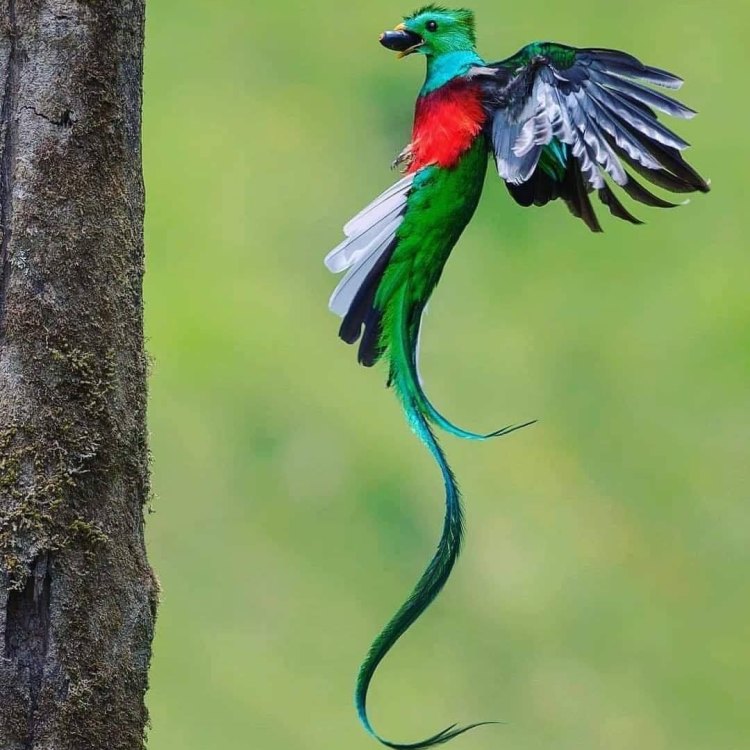
Quetzal
- Adult Size: Medium
- Average Lifespan: 10-15 years in the wild
- Reproduction: Sexual
- Reproductive Behavior: Mating displays performed by males
- Sound or Call: Males produce a repetitious, plaintive whistle
- Migration Pattern: Non-migratory
- Social Groups: Solitary or small groups
- Behavior: Generally calm and sedentary
- Threats: Habitat loss, climate change, hunting
- Conservation Status: Near Threatened
- Impact on Ecosystem: Seed dispersal
- Human Use: Symbolic and cultural importance, ecotourism
- Distinctive Features: Long, colorful tail feathers
- Interesting Facts: Considered a sacred bird by the ancient Mayans and Aztecs
- Predator: Snakes, birds of prey
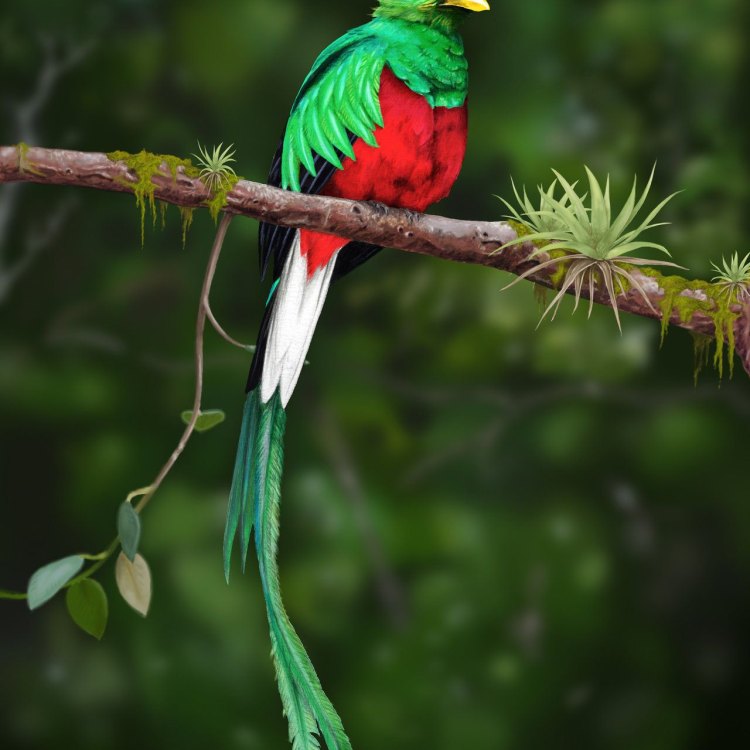
Pharomachrus mocinno
The Majestic Quetzal: A Symbol of Conservation and Cultural Significance
For centuries, the quetzal has captured the hearts and minds of people all around the world with its stunning appearance and intriguing behavior. This medium-sized bird, known for its long, colorful tail feathers, holds a special place in the hearts and cultures of many Mesoamerican civilizations, and has become a symbol of conservation efforts in recent years. In this article, we will explore the unique features and characteristics of the quetzal, its impacts on the ecosystem, and its significant role in human history.The Basics: Size, Lifespan, and Reproduction
The quetzal (Pharomachrus mocinno) is a striking bird found in the cloud forests of Central America, particularly in countries such as Guatemala, Costa Rica, and Panama PeaceOfAnimals.Com. It is a medium-sized bird, measuring about 36-40 cm in length and weighing between 200-300 grams. The males are slightly larger than females, with their long tail feathers accounting for almost half of their total body length.Quetzals have an average lifespan of 10-15 years in the wild, though some have been known to live up to 20 years in captivity. They reach sexual maturity at around 2-3 years of age and have a breeding season that typically begins in March and lasts until June. As for their reproductive behavior, quetzals are sexual and mate through a series of elaborate courtship displays.
Courtship and Mating: A Mesmerizing Display
During the breeding season, male quetzals perform elaborate displays to attract female mates. These displays usually involve the male gracefully flying around the female and showing off his long tail feathers, which have a shimmering iridescent green color. The tail feathers, which can reach up to 90 cm in length, are believed to be the inspiration behind the Mesoamerican god Quetzalcoatl, depicted as a feathered serpent.Apart from their stunning feather displays, males also produce a distinct call to attract females Queen Snake. This call is characterized as a repetitious, plaintive whistle, which can be heard echoing through the forest during the early morning hours.
Once a female has been successfully courted, the pair will mate and the female will lay a clutch of 2-4 eggs in a nest typically made from moss, lichen, and other plant materials. The male and female will take turns incubating the eggs and caring for the young until they are ready to leave the nest at around 4 weeks old.
No Place Like Home: Migration and Social Behavior
Unlike many bird species, quetzals are non-migratory and tend to stay in a relatively small area all year round. They are also solitary birds, except during the breeding season when they form small groups consisting of a mated pair and their offspring.In terms of behavior, quetzals are generally calm and sedentary, spending most of their time perched on branches in the forest canopy. They are also known to be monogamous, with pairs staying together throughout the breeding season and sometimes even multiple breeding seasons.
Threats to the Quetzal and Conservation Status
Despite their majestic presence, quetzals are facing a number of threats that are endangering their populations. One of the biggest threats is habitat loss due to deforestation and agriculture, which has significantly reduced suitable nesting and foraging sites for quetzals. Climate change is also a major concern, as it affects the delicate ecosystem of the cloud forests, where quetzals rely on specific weather conditions for nesting and feeding.Furthermore, hunting of quetzals for their beautiful feathers and as a status symbol has significantly reduced their numbers in the wild. This has led to the near threatened status of quetzals on the International Union for Conservation of Nature (IUCN) Red List of Threatened Species.
The Importance of Quetzals in Ecosystems
Quetzals play a vital role in the ecosystems of the cloud forests they inhabit. As frugivorous birds, they feed mainly on fruits and are important seed dispersers for many plant species. The survival of these plants depends on quetzals as they help to distribute their seeds, contributing to the diversity and health of the forest.Moreover, quetzals also play a crucial role in pollination. As they feed on nectar from flowers, they transfer pollen from one flower to another, aiding in the reproduction of a variety of plant species. Without quetzals, the delicate balance of the cloud forest ecosystem would be greatly disrupted.
The Quetzal's Cultural Significance and Human Use
The quetzal has been revered by Mesoamerican civilizations for centuries, with many considering it a sacred bird. The ancient Mayans and Aztecs believed that the quetzal was a representation of the god Quetzalcoatl and often used its feathers in ceremonial headdresses and other artifacts.In modern times, the quetzal continues to hold cultural and symbolic importance, especially in countries like Guatemala, where it is the national bird and is featured on the country's currency. The quetzal is also a source of pride and national identity, often appearing in art, literature, and even sports teams.
Additionally, the quetzal has become a popular attraction for ecotourism. Many travelers visit Central America specifically to catch a glimpse of this stunning bird in its natural habitat. Ecotourism has become an important source of income for local communities, promoting the conservation and protection of quetzals and their habitat.
Becoming Involved in Quetzal Conservation
The decline of quetzal populations is a crucial conservation issue that requires immediate attention. As responsible citizens of the world, there are several ways we can get involved in quetzal conservation efforts.One way is by supporting organizations and projects that focus on protecting and preserving quetzals and their habitats. These organizations often provide opportunities for individuals to volunteer and participate in conservation activities, such as reforestation and monitoring of quetzal populations.
Another way to help is by supporting sustainable tourism that promotes the conservation of quetzals and responsible human interactions with these birds. By choosing eco-friendly and ethical tour operators, we can contribute to the protection of quetzals and their ecosystems while also enjoying the opportunity to observe these majestic birds in the wild.
In addition, individuals can also make a difference by making small changes in their daily lives to reduce their impact on the environment. Reducing paper and wood consumption, supporting sustainable and ethical agriculture, and reducing carbon emissions can all have a positive impact on the habitats and survival of quetzals and other species.
In Conclusion
Quetzals are truly one of the most remarkable and captivating birds in the world. Their striking appearance, intriguing behavior, and cultural significance have made them a treasured species for centuries. However, their populations are facing significant threats, and it is up to us to take action and protect these beautiful birds and their habitats.By understanding the unique features and characteristics of quetzals, their importance in their ecosystems, and their significant role in human history, we can appreciate and value these birds even more. Let us all work together to ensure that the quetzal continues to soar through the cloud forests for generations to come.
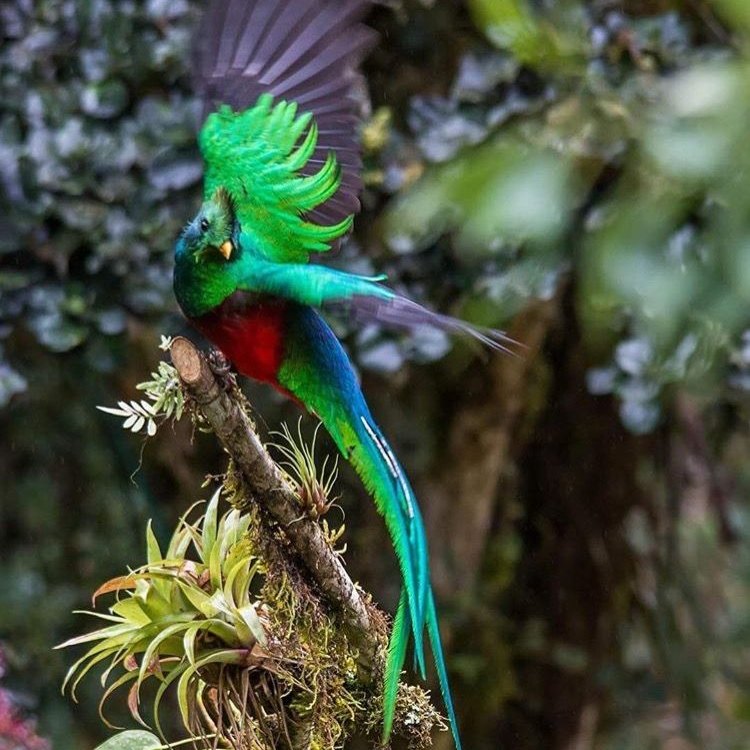
The Quetzal: A Majestic Bird of Central America
Disclaimer: The content provided is for informational purposes only. We cannot guarantee the accuracy of the information on this page 100%. All information provided here may change without prior notice.

